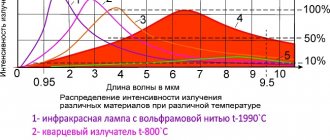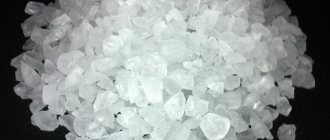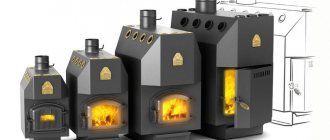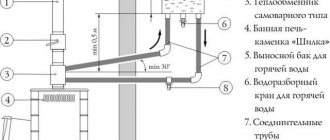Technological progress in the heating equipment segment is developing in different directions. Some manufacturers rely on improving the performance characteristics of the element base of units, others promote the latest automatic control devices, and still others are also engaged in design optimization at a basic level. The last group of developments includes a bithermal heat exchanger. What it is? Essentially, this is a heating chamber capable of performing two different tasks - preparing water directly for heating, and for the needs of hot water supply, that is, for domestic consumption.
General information about bithermic heat exchanger
Classic heat exchangers for boilers provide for the separation of heating chambers. That is, one chamber is intended for servicing heating circuits - usually the main one, and for hot water supply - a secondary radiator. This design has many advantages, however, against the backdrop of combined heating chambers, its weaknesses also become obvious. In this case, it would be incorrect to assume that in the second case the water is mixed - this principle does not allow a bithermic heat exchanger. What is this in terms of approach to water maintenance? This is the same radiator equipment, but with a common housing, which contains both chambers for heating the coolant and compartments for preparing domestic water. In bithermal systems, the principle of separating service areas of different environments also applies, but this applies specifically to the internal delimitation of chambers. While a standard split heat exchanger initially contains two different chambers.
terms of Use
Experts advise choosing this radiator for use with hard water. At the same time, precipitation forms at the bottom of the device, they cause “boiling”. This promotes the activation of sediment formation, which may result in device failure and pipes becoming clogged.
To avoid such problems, you should not use heating in such modes that “boiling” may occur in the lower part of the device. It is recommended to use filters for cleaning and devices to reduce water hardness.
It should be noted that many new systems are not suitable for the formation of salts, due to the high speed of water flow in the radiator, circulation systems, this can prevent the boiling process.
It is prohibited to use ethylene glycol as a coolant in a radiator, because the salts and sediments that it forms cannot be removed. The disadvantage of this type of boiler is the low power in the DHW operating system.
Initially, in the first four days, the hot water will have a temperature in the panel (up to 90 degrees). For this reason, it is necessary to make 1-2 places of the hot water supply system from steel .
Service companies wash devices from formed sediments using equipment and acidic compounds. Biothermal radiators can withstand 1-3 washing procedures.
They should be replaced in the future. Heating with a bithermal radiator is inexpensive, and their system is durable, but not powerful. If the water is very hard, the operation of the entire heating system may be disrupted.
Structural device
Now it’s worth understanding the design features of bithermal radiators, which allow it to separately heat different environments. Experts characterize such structures with the concept of “pipe within a pipe” or “section within a section.” If a conventional heat exchanger assumes a set of pipes that have a hollow niche, then the bithermic device is distinguished by its internal division into several segments - these are zones in which water circulates for hot water supply and heating without mixing. And according to the classical scheme, copper fins-plates are also attached to the pipes, increasing the heat transfer coefficient. Obviously, depending on the method of integration into the target equipment, other design features of the radiator will be provided. In particular, the design of the bithermic heat exchanger of a gas boiler is oriented towards heating by a burner, so the housing can provide additional layers of protection. It is mandatory for all heat exchangers to provide safety measures against electrical short circuits. Since the circuits can interface with other utility lines, grounding and the presence of fuses in boiler stations are also mandatory.
Design and principle of operation
The design of a gasketed plate heat exchanger includes:
- a stationary front plate on which the inlet and outlet pipes are mounted;
- fixed pressure plate;
- movable pressure plate;
- package of heat exchange plates;
- seals made of material that is heat-resistant and resistant to aggressive environments;
- upper supporting base;
- lower guide base;
- bed;
- set of coupling bolts;
- Set of support feet.
This arrangement of the unit ensures maximum intensity of heat exchange between working media and compact dimensions of the device.
Design of a gasketed plate heat exchanger
Most often, heat exchange plates are made by cold stamping from stainless steel with a thickness of 0.5 to 1 mm, however, when using chemically active compounds as a working medium, titanium or nickel plates can be used.
All plates included in the working kit have the same shape and are installed sequentially, in a mirror image. This method of installing heat exchange plates ensures not only the formation of slot channels, but also the alternation of primary and secondary circuits.
Each plate has 4 holes, two of which provide circulation of the primary working fluid, and the other two are isolated by additional contour gaskets, eliminating the possibility of mixing working fluids. The tightness of the connection between the plates is ensured by special contour sealing gaskets made from a material that is heat-resistant and resistant to active chemical compounds. The gaskets are installed in the profile grooves and secured using a clip lock.
Operating principle of plate heat exchanger
The effectiveness of any plate maintenance is assessed according to the following criteria:
- power;
- maximum temperature of the working environment;
- bandwidth;
- hydraulic resistance.
Based on these parameters, the required heat exchanger model is selected. In collapsible plate heat exchangers, the throughput and hydraulic resistance can be adjusted by changing the number and type of plate elements.
The intensity of heat transfer is determined by the flow regime of the working medium:
- with laminar flow of the coolant, the intensity of heat transfer is minimal;
- the transition regime is characterized by an increase in the intensity of heat transfer due to the appearance of turbulence in the working environment;
- The maximum intensity of heat exchange is achieved with turbulent movement of the coolant.
The performance characteristics of the plate heat exchanger are calculated for a turbulent flow of the working medium.
Depending on the location of the grooves, there are three types of heat exchange plates:
- with “soft”
channels (grooves are located at an angle of 60). Such plates are characterized by slight turbulence and low heat transfer intensity, however, “soft” plates have minimal hydraulic resistance; - with “medium”
channels (corrugation angle from 60 to 30). The plates are a transitional option and are distinguished by average turbulence and heat transfer rates; - with “hard”
channels (corrugation angle 30). Such plates are characterized by maximum turbulence, intense heat transfer and a significant increase in hydraulic resistance.
To increase the efficiency of heat exchange, the movement of the primary and secondary working fluid is carried out in the opposite direction. The heat exchange process between the primary and secondary working fluids occurs as follows:
- The coolant is supplied to the inlet pipes of the heat exchanger;
- When moving the working media along the corresponding circuits formed from heat-exchange plate elements, intense heat transfer occurs from the heated medium to the heated one;
- Through the outlet pipes of the heat exchanger, the heated coolant is directed to its destination (heating, ventilation, water supply systems), and the cooled coolant again enters the working area of the heat generator.
Operating principle of a plate heat exchanger
To ensure efficient operation of the system, complete tightness of the heat exchange channels is necessary, which is ensured by sealing gaskets.
How does a bithermal heat exchanger work?
The operating modes for heating and hot water supply have several differences. In the first case, standard heating of water occurs during the combustion of gas - if we are talking about the same gas boilers, for example. That is, in heating mode, the coolant is directly heated, which then circulates along its circuit. As for the operating mode in the DHW format, this function is in some way secondary. The primary heating of the coolant also occurs, and from it the heat is transferred to the sections with water intended for hot water supply. In this case, the heating heat exchangers do not distribute the heating water through the corresponding circuits - it remains in its section. For almost all bithermic boilers, one rule applies - only one of the two circuits can operate at the same time. Simultaneous circulation of water for heating and hot water supply is unacceptable.
Wall-mounted boilers with separate heat exchangers
A standard boiler works as follows: using a circulation pump, the coolant constantly moves through the first heat exchanger, which is heated by the burner. Thus, hot water moves through the heating system from the heat exchanger to the radiators and back.
When there is a need for hot water supply, a special sensor gives a signal and a three-way tap directs hot water from the first heat exchanger to the second. In other words, the cold water in the second heat exchanger is heated not from the burner, but from the already heated coolant.
This method allows you to reduce heating costs due to more economical fuel consumption when consuming hot water for domestic needs.
Advantages of using boilers with separate heat exchangers:
- The maximum hot water temperature does not exceed 60 degrees. This is quite enough for any needs. In this case, the likelihood of getting burned while taking a shower is reduced to zero.
- The second heat exchanger has a long service life, as it is used less often.
- Simple design. Boilers with separate heat exchangers are easy to repair. In most cases, this can be done with your own hands, saving on the services of professional craftsmen.
- The risk of clogging is minimized. Practice shows that the need for maintenance for separate heat exchangers occurs less frequently than for bithermic ones.
We recommend: Do-it-yourself heating (heating) of a greenhouse: 8 best projects
Important: Despite the ease of servicing separate heat exchangers, it is better not to do this yourself if you do not have experience. It may be dangerous. In all documents supplied with heating equipment, manufacturers insistently request that you refrain from doing repairs yourself.
Flaws:
- Separate heat exchangers take up more space, as a result of which the size of the boiler may be larger than what the buyer requires.
- The boiler cannot operate without a three-way valve. Its task is to automatically redirect the water flow to the second heat exchanger when the residents of the house begin to use hot water supply. Such taps often break down and need to be replaced, which creates great inconvenience.
- The price of boilers with separate heat exchangers may be higher due to the greater number of components.
As you can see, such boilers have not only positive qualities, but also disadvantages that you definitely need to know about before making a purchasing decision.
As an example, consider the wall-mounted boiler Baxi Eco Compact 14F. This model is popular in the market due to its affordable price, compact size and good electronics.
The water heating temperature (DHW) ranges from 35 to 60 degrees. The boiler runs on natural gas and consumes 1.6 m3 of fuel per hour. Compact dimensions (700x400x298 mm) allow it to be installed in any room without special site preparation.
A boiler with separate heat exchangers Baxi Eco Compact 14F is recommended for installation in rooms with a total area of no more than 140 m2. This equipment can easily cope with operation in Russian conditions, which is confirmed by many of our clients who have purchased the Baxi Eco Compact 14F boiler.
Boilers with bithermic heat exchangers
The use of bithermal radiators in boiler systems is becoming increasingly widespread. Often, large manufacturers themselves develop model designs using their own components, including heat exchangers. One of the leaders in the segment is Immergas, which offers boilers with heat exchangers with 6 tubes. This design offers an advantage over 4 and 5 tube heat exchangers, since the expanded section can be located close to the burner flame. However, it is necessary to take into account the thermal power that will be provided by the 6-tube heat exchanger of the boiler. The bithermal operating principle in this case is capable of producing about 24 kW and this may be excessive for private houses and large country cottages. The companies Vaillant, Navien, and Protherm are also developing bithermal units. The products of these manufacturers are distinguished not only by their modern design, but also by their functionality. Engineers strive to provide models with the ability to smoothly adjust the flame, the option of cooling the heat exchanger, etc.
Advantages of bithermic units
The advantages of heat exchangers with a single block extend to both heating efficiency as such and ease of control, not to mention the higher reliability of the units. As for efficiency, bithermic radiators operate with a lower heat loss coefficient. If a system divided into two blocks requires heating of two blocks, then in this case the filling of one housing is serviced - accordingly, the volume of heat generated increases. In terms of control, a bithermal heat exchanger is more profitable for the same reason. Thermostats are guided by the indicators of one solid block, which affects the accuracy of the data obtained. Reliability, in turn, is achieved by minimizing the connecting infrastructure - in fact, only a connection between the heat exchanger and supply channels is required.
Design flaws
The main disadvantage of the bithermic design is the limitation when working with liquids saturated with salts. In this context, one can note the imperfection of the monoblock case and the coaxial circuits inside, which quickly become covered with scale. In addition, a bithermic heat exchanger is not able to provide the same performance as in the case of divided radiators. This applies specifically to hot water supply, since the design itself involves a smaller volume of water served for such tasks.
Consumer Reviews
Users themselves mainly emphasize the energy efficiency of this solution. Boiler and boiler owners who have previously dealt with traditional split heat exchangers point to both high heat output and low gas consumption. But this applies to cases where a gas supply infrastructure is used, into which boilers with a bithermic heat exchanger are installed. Reviews from owners who rarely use the heating function, on the contrary, indicate that such units are unprofitable. The fact is that boilers with divided heating allow you to work specifically on one of the tasks - heating or hot water supply, which turns out to be more economical.
Nuances of operation
Manufacturers of bithermal equipment note that rapid wear of the heating filling can be prevented by following several operating rules. These include, in particular, ignoring preventive checks of circuits. Most often, a bithermal heat exchanger is installed on a heating and hot water system with the expectation of long-term and regular operation. In intensive operation, even relatively clean water can negatively affect the condition of the radiator pipes. Accordingly, periodic cleaning of the surfaces of the sections is required.
It is not recommended to sharply increase the heating temperature. Unlike divided heat exchangers, monoblock systems require more time to prepare DHW. When heat exchangers are used for heating, this is practically unnoticeable because the water is heated quickly for such tasks. But liquid for household needs, as already noted, is heated secondarily.
Advantages and disadvantages
The main advantage of bithermal radiators has already been announced. They are cheaper and at the same time lose little in performance. Combining the heating and hot water circuits has virtually no effect on the heating rate of running water and at the same time does not reduce the amount of heated water. Comparing boilers of the same power from the same manufacturer, you can see that the permissible hot water consumption is practically the same.
The second aspect is the method of heating the water. Due to three or four precise fastenings of the inner tube to the outer one, the area of contact of the coolant with the heat exchanger increases. In fact, the heat from the plates is distributed not only over the surface of the outer tube, but also partially transfers to the inner tube. This increases the heating rate.
In the DHW circuit, when using only heating, the water warms up to the set heating temperature and does not take away heat until the hot water tap is opened.
As soon as the hot water tap opens, there is already well-heated water in the pipes. The heating circuit is closed, and the remaining water inside the heat exchanger additionally releases heat without preventing its transfer from the plates to the hot liquid in the internal cavity.
We recommend: Operating pressure in the heating system in a private house: what should it be, how to create it?
What about the cons?
And they also exist. The complex shape of the surface inside the tubes potentially increases the rate of salt deposition. Especially if the heating temperature is set to a high temperature up to 95°C inclusive. However, this is largely a problem not of the heat exchanger, but of water preparation.
In heating, by definition, the coolant must be filled in prepared. To do this, the liquid is removed from excess salts, iron and other inclusions, or at least softened, antifreeze and other additives are added to prevent the formation of scale. Even if you do not prepare the water, it moves in a closed circuit in the heating system and over time salts leave it, the total amount of which is not replenished.
With regard to hot water, it all depends on the adequacy of the user and the presence of pre-treatment and filtration. If there is a suspicion that the water is hard and contributes to the formation of scale, then a single-circuit boiler with a large channel cross-section in the heat exchanger will be at risk.
Scale in the heat exchanger
In any case, a filter or filter station should be installed before the boiler to prevent the ingress of salts and lime into the hot water supply and, of course, into the consumer’s tap.
Another feature is the separate operation of the heating and hot water supply circuits:
- At the first moment, while the hot water is open, with the heating running, almost boiling water will flow (depending on the set heating parameters).
- The coolant does not warm up when using hot water, but water heating, even with a very small volume, still has high heat capacity and inertness. You will have to use hot water for a very long time to feel the decrease in heat in the room in winter.
But in the end we can talk about the last advantage of the bithermic heat exchanger. In summer there are no problems with obtaining hot water. The source of heat for it remains the same combustion of fuel, and there is no need to warm up the entire circuit or even a specially prepared limited bypass circuit in order to please yourself with a hot shower.











